There are at least two ways to do this.
Subscripting
Use objectForKeyedSubscript: and setObject:forKeyedSubscript:
@property (nonatomic,strong) NSMutableDictionary *properties;
- (id)objectForKeyedSubscript:(id)key {
return [[self properties] valueForKey:[NSString stringWithFormat:@"%@",key]];
}
- (void)setObject:(id)object forKeyedSubscript:(id <NSCopying>)key {
[[self properties] setValue:object forKey:[NSString stringWithFormat:@"%@",key]];
}
Person *p = [Person new];
p[@"name"] = @"Jon";
NSLog(@"%@",p[@"name"]);
resolveInstanceMethod:
This is the objc_sendMsg executed by the runtime for all methods:

If you look at the bottom, you have the opportunity to resolveInstanceMethod:, which lets you redirect the method call to one of your choosing. To answer your question, you need to write a generic getter and setter that looks-up a value on a dictionary ivar:
// generic getter
static id propertyIMP(id self, SEL _cmd) {
return [[self properties] valueForKey:NSStringFromSelector(_cmd)];
}
// generic setter
static void setPropertyIMP(id self, SEL _cmd, id aValue) {
id value = [aValue copy];
NSMutableString *key = [NSStringFromSelector(_cmd) mutableCopy];
// delete "set" and ":" and lowercase first letter
[key deleteCharactersInRange:NSMakeRange(0, 3)];
[key deleteCharactersInRange:NSMakeRange([key length] - 1, 1)];
NSString *firstChar = [key substringToIndex:1];
[key replaceCharactersInRange:NSMakeRange(0, 1) withString:[firstChar lowercaseString]];
[[self properties] setValue:value forKey:key];
}
And then implement resolveInstanceMethod: to add the requested method to the class.
+ (BOOL)resolveInstanceMethod:(SEL)aSEL {
if ([NSStringFromSelector(aSEL) hasPrefix:@"set"]) {
class_addMethod([self class], aSEL, (IMP)setPropertyIMP, "v@:@");
} else {
class_addMethod([self class], aSEL,(IMP)propertyIMP, "@@:");
}
return YES;
}
You could also do it returning a NSMethodSignature for the method, which is then wrapped in a NSInvocation and passed to forwardInvocation:, but adding the method is faster.
Here is a gist that runs in CodeRunner. It doesn't handle myClass["anyProperty"] calls.
